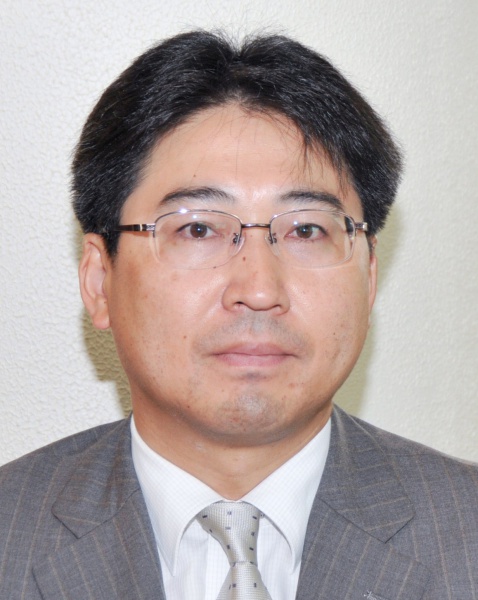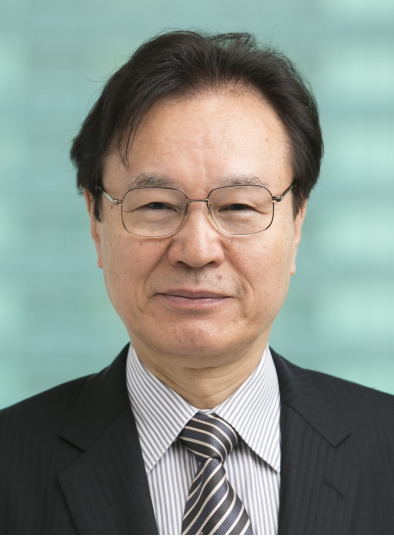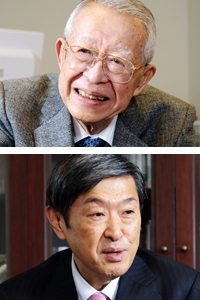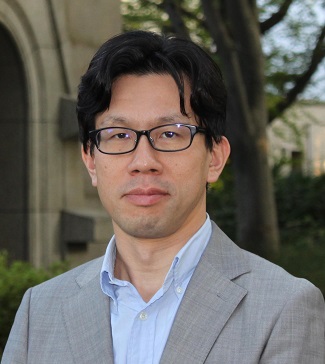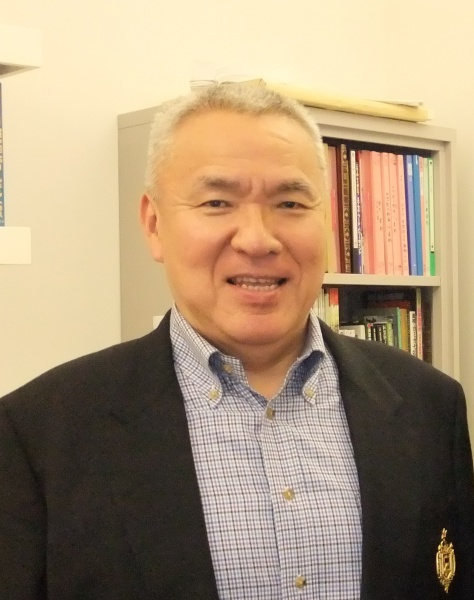Challenges to the New ASEAN-Japan Partnership in the Changing Regional Circumstances

OBA Mie, Associate Professor, Tokyo University of Science
In 2013, the administration of Abe Shinzo tried to make an impression with its pro-ASEAN policies. During the course of last year, Abe visited all ten ASEAN countries while Kishida Fumio, the Minister for Foreign Affairs, and other senior government officials also made frequent visits to the countries in Southeast Asia. Also, in December 2013, the ASEAN-Japan Commemorative Summit Meeting was held to commemorate the 40th anniversary of ASEAN-Japan. In addition to the joint ASEAN-Japan statement entitled “Hand in hand, facing regional and global challenges,” the summit meeting adopted various documents including the Vision Statement on ASEAN-Japan Friendship and Cooperation, and the Implementation Plan for the Vision Statement to emphasize the importance of relations between Japan and ASEAN.
Some would say that the pro-ASEAN policies of the Abe administration have been positioned as the centerpiece of Japanese foreign policy toward Asia due to the stalemate in relations with China and Korea, which shows no sign of improvement in the short term at least. The fact that Abe’s revered grandfather, Prime Minister Kishi Nobusuke, advocated the concept of a development fund for Southeast Asia in the 1950s, and emphasized understanding of a potential role for Japan in Asia, may also have influenced Abe’s policies in favor of Southeast Asia. However, even if these factors have exercised some influence, Japan’s pro-ASEAN policies should be understood as a strategic response to changes in the regional environment over the medium to long term.
Changes in the East Asian Regional Environment
When discussing ASEAN-Japan relations, the Fukuda doctrine delivered in a speech by then-Prime Minister Fukuda Takeo when he was invited to the second summit meeting of ASEAN in August 1977 is still mentioned frequently today. The Fukuda doctrine emphasized three pillars as the foundation for the ASEAN-Japan relationship: (1) Japan rejects the role of a military power, (2) Japan will build a relationship of mutual confidence based on “heart-to-heart” understanding between Japan and Southeast Asia, and (3) Japan will cooperate from the perspective of an equal partner. We should bear in mind that the historical background to the release of the Fukuda doctrine is the strong backlash to Japan’s economic re-launch in Southeast Asia, which had been gathering pace since the early 1970s. That is to say, this doctrine suggests that Japan had not been building relationships of mutual trust based on “heart-to-heart” understanding, and that there were suspicions that Japan might develop into a military power. Furthermore, the emphasis on the point of “an equal partnership” was premised on a vertical relationship where the differences in national strength between Japan as a predominant economic power and ASEAN countries at the time were plain as daylight, indicating the need for sensitivity to ASEAN countries in order to moderate the strong backlash to the presence of Japan in ASEAN countries.
However, at present, the global environment around Japan and ASEAN has undergone major changes and, consequently, the concept of the ASEAN-Japan relationship and the agenda that should be advanced through ASEAN-Japan cooperation have changed in important ways.
One of the major changes in the regional environment has been the transformation of the whole of East Asia including Japan and ASEAN into a growth center. Economic development in both China and ASEAN countries has contributed much to this change. Since the Plaza Accord in the mid-1980s, the deepening of interdependence and economic development in East Asia, including the Asian NIEs and parts of ASEAN, have been remarkable with a World Bank report praising it as the East Asian miracle in 1993. Even though some ridicule was directed at the miracle during the meltdown caused by the Asian Financial Crisis in 1997, the rebound in ASEAN countries has been brilliant and the pace of the recovery beyond expectations. Although the countries received an economic battering in the Global Financial Crisis that followed the collapse of Lehman Brothers in 2008, they quickly escaped the impact and together with China demonstrated their presence as a global growth center.
The second change in the regional environment is the rise of China and the relative decline in Japan’s presence. Japan was expected to play an increasing role as an economic power after the end of the Cold War, but following the collapse of the bubble economy in the early 1990s, the country entered a longer period of economic stagnation, the so-called lost decade. Japan had no choice but to explore a new relationship with the Asian countries amid the underperformance of the economic power that had been an important resource for diplomacy. The relative decline of Japan’s presence in the region started as China was gradually making its presence felt. Even so, Japan’s presence as a power in East Asia until the 1990s retained some level of magnitude as can be seen from Japan’s support for Asia at the time of the Asian Financial Crisis. However, having already increased its presence in the 1990s, since the early 2000s, China rapidly stepped up its economic and political influence in the region. Together with the economic development of China in the 1990s came rising suspicions of China among its neighbors. To moderate these suspicions, China has deployed a proactive and conciliatory regional diplomacy since the late 1990s, leading to an increased Chinese presence in the region.
Thirdly, since the end of the 1980s, a multi-tiered regional system with ASEAN as the institutional center has developed, gathering expectations for a mechanism to maintain the regional order. Launched in 1967, only those countries with a diplomatic stance close to the West were members of ASEAN during the Cold War confrontation. The Declaration of ASEAN Concord and the Treaty of Amity and Cooperation in Southeast Asia, which were adopted at the first ASEAN summit in 1976, incorporated peace and stability, not only in ASEAN countries, but for the whole Southeast Asian region, as well as an orientation toward a community, but the vision remained a dream in view of the real-life situation in the region. However, after the end of the Cold War in the 1990s, ASEAN incorporated Vietnam, Laos, Cambodia, and Myanmar as member countries, successfully turning ASEAN, as the name implies, into a regional system that includes the whole Southeast Asian region. ASEAN tried to create a regional environment to its own liking by aiming for independence through a course of action that excluded, as far as possible, the influence of the major powers, and instead proactively built relations with the major powers outside the region, and by taking the initiative to establish and operate broader regional systems where ASEAN formed a part of the whole. Some examples include the proactive involvement in the activities in APEC, ARF and ASEAN+3.
By the 2000s, ASEAN further strengthened its collaboration with countries outside the region, and started to take an active part in shaping order across the broader region. Starting when China and India affiliated themselves with the Treaty of Amity and Cooperation in Southeast Asia (TAC) in 2004, Japan, Korea, Australia and other countries outside the region have since become affiliated with TAC. The fact that countries outside the region affiliated themselves with TAC, which stipulates respect for sovereignty, peaceful resolution of disputes, and cooperation to stabilize order in the region, had the political effect of making it explicit that countries outside the region would comply with criteria and rules for maintaining order in the region formulated by ASEAN countries. In addition, ASEAN also promoted moves to conclude free trade agreements (FTA) with countries outside the region. At present, ASEAN has concluded FTA with such principal countries outside the region as China, Japan, Korea, Australia and New Zealand (CER), and India. In terms of multilateral regional frameworks, in 2005, ASEAN launched EAS as a framework for further promoting the strengths of the East Asia region, and in 2010, ADMM+, the framework for dialogue and cooperation on political security in East Asia. In both cases, ASEAN is the institutional center.
Leveling ASEAN-Japan Relationship
Amid the developments in the regional environment, the ASEAN-Japan relationship has changed to a more horizontal relationship from the former vertical one. Namely, the relativization of Japan’s power is apparent not only with regard to China, but also ASEAN countries. Naturally, as a major power, there is still much Japan can do to support ASEAN countries. For example, there are high expectations on Japan to play a role in a variety of areas including infrastructure support and initiatives to eliminate the ASEAN divide.
On the other hand, in the context of the three changes mentioned above, by the 1990s, ASEAN had become an entity that covered the whole of Southeast Asia, not only asserting its independence by enhancing relationships with countries outside the region, but also promoting cooperation to strengthen integration as ASEAN. The Declaration of ASEAN Concord II adopted in October 2003 declared that an ASEAN Community would be established comprising three pillars, namely ASEAN Security Community (*later renamed the ASEAN Political-Security Community), ASEAN Economic Community, and ASEAN Socio-Cultural Community. In 2008, the ASEAN Charter took effect, turning ASEAN from an aggregation of documents adopted at various ministerial meetings and working groups, or rules and practices that had never been codified, into a regional system with international status as a legal personality. The organization was also arranged on the premise of forming three Communities and the schedule for forming ASEAN Communities was brought forward from the original 2020 to 2015. In this way, ASEAN countries are continuing to systematize the ASEAN that they themselves have created, while advancing cooperation in the direction of integration. ASEAN is also raising its profile regionally as well as in the international community.
The relationship between Japan and ASEAN countries is no longer a matter of unilateral support from Japan to ASEAN countries as it was at the time of the Fukuda doctrine, but rather this is a time when Japan and ASEAN have joined hands and are asked what they can do. ASEAN-Japan cooperation is not only a matter of Japan’s support for ASEAN and ASEAN countries, but Japan and ASEAN have been tasked with the goal of dealing with stability and prosperity in a broader East Asia region as well as global issues. The Tokyo Declaration, adopted as much as ten years ago at the ASEAN-Japan Commemorative Summit Meeting on the 30th anniversary of ASEAN in December 2003, points to the changes expected in the ASEAN-Japan cooperation. Namely, this Declaration included contributions toward deepening East Asia cooperation in order to build an East Asia community, as well as cooperation in addressing global issues such as stronger cooperation in the fight against terrorism, disarmament and non-proliferation of weapons of mass destruction, cooperation with United Nations peace-keeping operations, reinforcing the multilateral trading system through the World Trade Organization (WTO), protecting the environment, and enhancing human security.
Emphasizing Political-Security Cooperation
The Vision Statement adopted at the ASEAN-Japan Commemorative Summit Meeting in December last year also reflects the changes in the regional environment and the leveling in the ASEAN-Japan relationship. It is an extension of past changes in the sense that it includes content such as how to deal with regional order in East Asia and global issues by means of the above-mentioned partnership between ASEAN and Japan. However, some major features of the concept of ASEAN-Japan cooperation indicated in the Vision Statement and other documents reflect the tensions that have developed in the political and security environment in the region since the end of 2000s. Cooperation on political and security matters has been positioned as the opening statement of ASEAN-Japan cooperation.
This tendency was also seen in the Joint Declaration for Enhancing ASEAN-Japan Strategic Partnership for Prospering Together (the Bali Declaration) adopted at the 14th ASEAN-Japan Summit in November 2011. The Bali Declaration lists five strategies for strengthening ASEAN-Japan partnership, and the opening strategy is “strengthening political-security cooperation in the region.” The Vision Statement of December 2013 lists four areas of partnership, and the first one is “partners for peace and stability.” The second one is “partners for prosperity,” which is a declaration of stronger cooperation in economic areas such as the ASEAN-Japan Comprehensive Economic Partnership Agreement, and initiatives to enhance ASEAN Connectivity. This is the kind of economic cooperation that used to constitute the main part of ASEAN-Japan cooperation. Nowadays, however, the emphasis in ASEAN-Japan cooperation has been focused on political-security cooperation.
This change has undoubtedly been brought on by rising tensions in the regional security environment since around the end of the 2000s when China’s diplomatic relations with its neighbors hardened. The context is thought to be growing calls within China, which had strengthened its presence on the global arena after the Global Financial Crisis, demanding that the leadership take a step away from the line of “keeping a low profile” and securing the rights of the country. The hardening attitudes have become particularly apparent in regard to maritime territory. From the late 1990s to the 2000s, China changed course from an unbending attitude to the territorial rights issues in the South China Sea involving Taiwan and some Southeast Asian countries, to a conciliatory attitude, but from around 2009, they returned to the hard line. In March 2009, China dispatched its largest patrol vessel (4,500 tons) to the South China Sea, to patrol the EEZ and protect Chinese fishing vessels, and to monitor foreign fishing boats. By 2010, the monitoring activities had not only increased, but there were also repeated naval maneuvers in the South China Sea and the East China Sea. In September 2010, there was a collision accident between a Chinese fishing boat and a patrol boat from the Japanese Coast Guard off the SenkakuIslands, which inflamed tensions between Japan and China. Although the tensions caused by the collision eased off for a time, in 2012, Ishihara Shintaro, the Governor of Tokyo, provoked by repeated intrusions into the territorial waters around the SenkakuIslands by Chinese vessels, declared that Tokyo would purchase the SenkakuIslands. Once the Japanese government announced that it would transfer ownership of the islands to the state, relations between Japan and China became even tenser. Tangled historical issues have further inflamed the confrontation, and there is seemingly no way out of the deadlock in relations between Japan and China.
Relations between China and the Southeast Asian countries have also grown increasingly tense over the South China Sea, and the situation has even shaken the solidarity and integrity of ASEAN itself. Including the SpratlyIslands and the Scarborough Reef, there are several territorial issues in the South China Sea involving China and some Southeast Asian nations. In addition, the plan to draft a code of conduct for the South China Sea has turned into a major issue between China and ASEAN. On the one hand, China does not waver from its stance that the territorial issues should be resolved bilaterally, but on the other hand, the country responded to the start of the work to draft a code of conduct. Meanwhile, the July 2012 meeting of the foreign ministers of ASEAN was unable to reconcile the conflicting perspectives among ASEAN countries over the issue of the South China Sea. This marked the first time that no joint communiqué was issued since the ASEAN Ministerial Meeting (AMM) were begun, but the suspicion is that China applied pressure on the host country, Cambodia, to avoid a statement that was unfavorable to China. In this way, China switches between conciliatory attitudes and hardening attitudes toward ASEAN countries while plotting ways to increase the benefits for their own country.
These hardening attitudes on the part of China have caused concern in the United States where a sense of caution toward China has grown stronger. Inaugurated in 2009, the Obama administration has adopted a rebalancing policy toward Asia, which has been interpreted as implying containment of China, and which was also expected to relativize China’s influence on the United States. However, since the start of the second term of the Obama administration, there have not only been recurring issues in Libya and elsewhere in the Middle East, but President Obama has been unable to proactively develop diplomacy with Asia due to a decline in the ability to lead the domestic government as indicated by the cancellation of plans to attend a series of meetings with APEC and ASEAN in October 2013.
Under these circumstances, the importance of political and security cooperation is emphasized in ASEAN-Japan cooperation. The matters for cooperation listed under Partners for Peace and Stability in the Vision Statement include, first of all, respect for universally recognized principles of international law, and upholding the principle of moderation, as well as resolving disputes by peaceful means including through dialogue and consultations, renunciation of the threat or use of force and in accordance with universally recognized principles of international law.
Toward Strengthening ASEAN-Japan Cooperation
In addition to leveling the ASEAN-Japan relationship, initiatives to stabilize the regional environment in East Asia will probably continue to be central to ASEAN-Japan cooperation based on the tensions in the regional environment in East Asia. Japan, in particular, is pushing for this direction. Fundamentally, in terms of hopes for stabilization in the East Asia region, the interests of ASEAN coincide with Japan’s, and we can say that this is reflected in the 2011 Bali Declaration and the 2013 Vision Statement. However, even though there is consensus that ASEAN-Japan political-security cooperation is important for stabilizing the region, it seems there is still no consensus on how, and to what degree it should be moved forward.
To start with, for Japan, the alliance with the United States is a cornerstone of diplomacy. In this context, strengthening political-security cooperation with Japan naturally has further implications than simply relations with Japan. On the other hand, even though ASEAN countries are coming together as ASEAN, the distance to China and the United States differs with each ASEAN country, and this defines their individual diplomatic and security policies. Namely, among ASEAN countries, there are countries like Cambodia, which is taking a stance that is closer to China, and countries like the Philippines, which is adopting a stance that is closer to the United States. In this context, there are, of course, a variety of opinions in ASEAN countries about how far to deepen political-security cooperation with Japan.
Additionally, even when the countries come together as ASEAN, there are still doubts about whether it is right for ASEAN to deepen political-security cooperation exclusively with Japan. While making a display of solidarity as ASEAN, ASEAN countries have strengthened individual relations, not only with Japan, but also with China, Korea, the United States, India, Australia and other countries outside the region, balancing the countries and taking care that no country sticks out and influences ASEAN. Based on this kind of unique diplomatic strategy for extraterritorial balance, it would definitely be preferable not to move forward with stronger political-security cooperation with Japan.
In fact, the tensions over security in East Asia involving ASEAN-Japan are also linked to confrontations over values and norms. Namely, whether it is preferable to shape society in a direction that emphasizes values that have strengthened the legitimacy of “universal values,” such as democracy, human rights, the Rule of Law, and good governance, since the 1990s, or whether pressing for these values constitutes interference in domestic affairs, and a flexible attitude in light of the individuality and situation in the country concerned should be maintained. In this regard, there is also conflict within ASEAN between the “advanced” member states , who recommend a “new ASEAN” that should realize democratic values, and “less-developed” ones, who hesitate to focus on implementing values that involve domestic structures in line with the traditional ASEAN principle of non-interference with internal policies. The power competition among major powers like the United States, Japan and China, is becoming deeply linked to the confrontation over values and norms. That is to say, the United States and Japan are backing the former approach, and China is supporting the latter.
For Japan, strengthening the partnership with ASEAN is preferable in a regional situation where the presence of Japan has been relativized, and it has become more important than ever to create stability in the regional order. In this case, however, we need to bear in mind that while ASEAN countries maintain their individual foreign diplomacy and security stance, they have also adopted a strategy of maintaining influence as ASEAN without becoming too involved with any one country by joining together as ASEAN and keeping the distance to major powers outside the region as equidistant as possible. Strategies based on a long-term outlook are required, as is an understanding that the complexities and toughness of the foreign policy of ASEAN (and ASEAN countries) cannot be dealt with by simple-minded means.
Translated from an original article in Japanese written for Discuss Japan. [February 2014]
